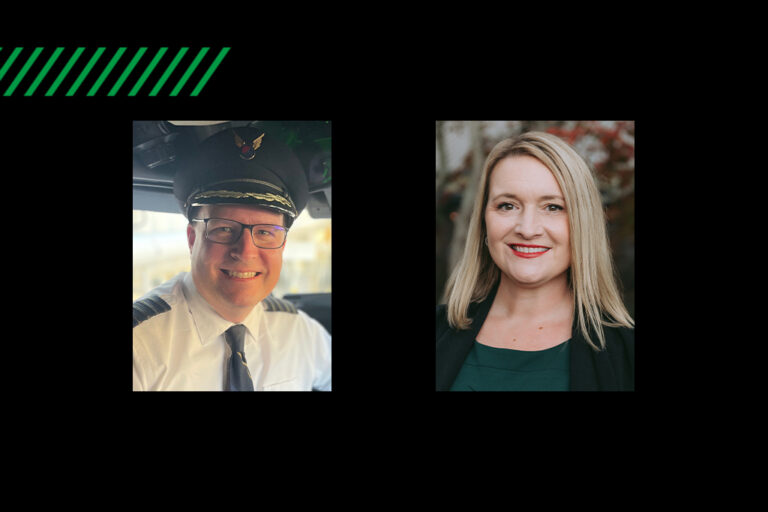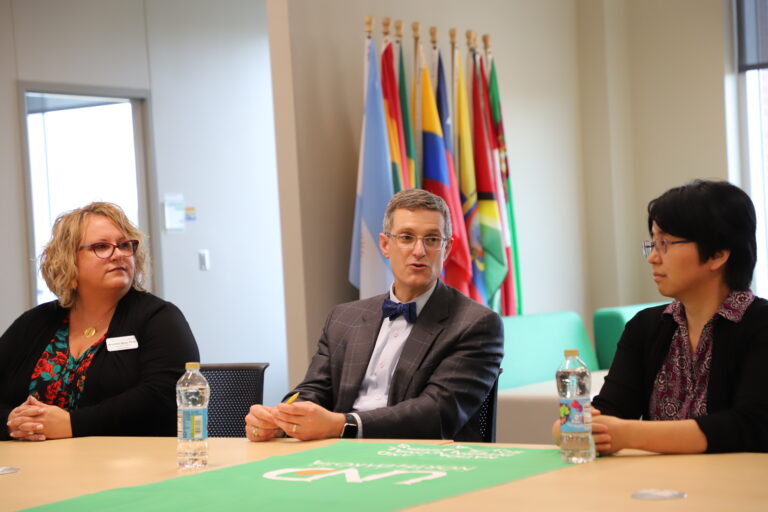Lessons from the Kiwi
UND student teachers discover education a world away in unique study abroad program

Carly Gullickson knew she wanted to enroll in a study abroad program when she came to UND.
Once she started her major in education, the scheduling of her courses made the goal seem unrealistic.
She was worried about falling behind by leaving the country for a semester, but she discovered an opportunity that could work to her advantage.
“I feel like this is one of those once-in-a-lifetime experiences,” Gullickson said. “And if I don’t do it now, I’m not sure if I’ll ever get the chance again.”
Director of Teacher Education Jennifer Bladow, who helps enable these experiences in the College of Education & Human Development, tries to encourage as many as possible to think the same way – it’s the best chance to travel.
UND’s partnership with University of Minnesota Morris’ Global Student Teaching program places students across the world every year. It’s a rare opportunity for soon-to-be-teachers to complete their student teaching abroad.
This semester, Gullickson and fellow UND student-teacher Paul Henning are in classrooms 8,000 miles away in New Zealand.
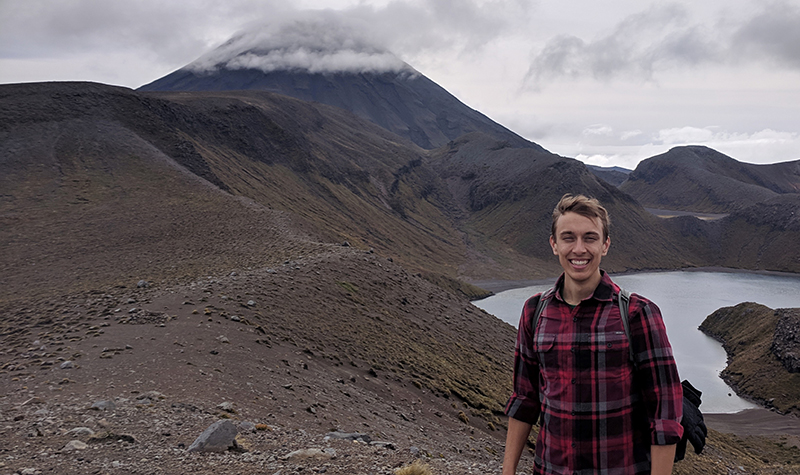
American perspective
Henning had the same thoughts as Gullickson – he wasn’t sure if he’d have the time before graduation to travel. He felt familiar with Grand Forks classrooms, and wanted to try something out of state. His sister completed her student teaching in Phoenix, Arizona, and New York City when she was studying in Iowa.
“She enjoyed the diversity of the experience,” Henning said, who’s originally from Woodbury, Minnesota. “She told me how it gave her a greater sense of knowledge and confidence. I was talking to a friend about it and he told me about the option to student teach abroad. That started the journey to where I am now.”
Henning lives with a host family in Napier, located on the east coast of the North Island. One of his host parents, Neil, teaches science at the same high school in which Henning student-teaches social science and economics.
“It’s interesting to see how the Kiwis view the United States,” Henning said, using the internationally recognized nickname for New Zealanders. “I’ve really enjoyed being there to provide insight and help them develop informed opinions about the U.S., and they find it intriguing to have a younger American teacher in the classroom.”
Henning has found great value in observing how the island nation incorporates the customs of its native people, the Maori. He says the country does a great job of balancing Western culture and that of the Maori, as many native people attend the school in which Henning teaches.
“The Maori language is found all throughout the school on signs and slogans,” Henning said. “It really makes up the culture of the school.”
He describes the Haka, a dance traditionally performed by Maori warriors that students learn and perform on special occasions. The Haka is most widely recognized as the routine performed by New Zealand’s national rugby team before their matches. School songs are also rooted in Maori culture.
“Students here ask how they compare to what I’ve experienced in high schools in the U.S., and I tell them the only real differences are accents and vocabulary,” he said.

Never bored
Gullickson agrees that even half way around the world, kids are kids. She’s spending her semester in what’s essentially a second and third grade classroom in Taupo, a city 90 miles northwest of Napier.
“The students seem like they could be picked right out of North Dakota, besides the accents,” she said. “They have similar interests in sports, art, gymnastics, Fortnite – everything.”
Like Henning, she’s in a homestay. The Morris, Minnesota, native does her best to travel and seek adventure on the weekends, saying the country lives up to its reputation for natural beauty. Taupo resides on the shores of Lake Taupo, the largest lake in New Zealand, which lies in the caldera of the Taupo Volcano.
“It’s such a relaxed environment and there is always something to do, usually involving the outdoors,” she said of her surroundings. “I feel like being here has made me more adventurous, and I’m willing to do things outside of my comfort zone.”
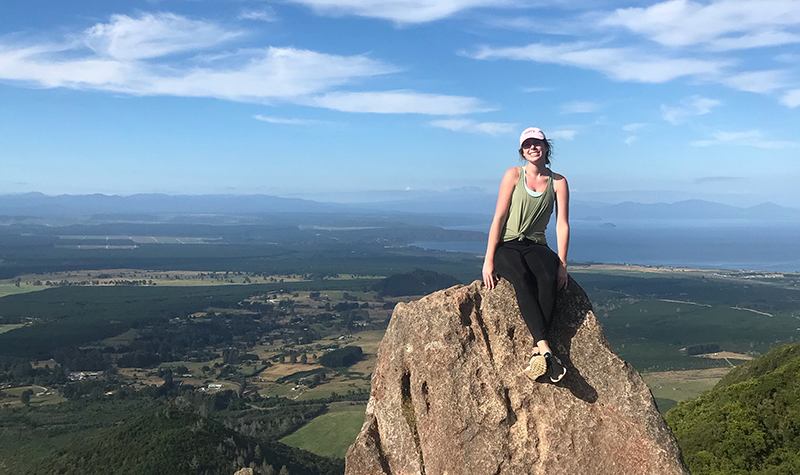
Meaningful differences
When asked about the big differences they notice, given all the similarities they see in youth culture, both say curriculum structures are far different than in the United States.
Henning says the high school class schedule is like nothing he’s seen, and it’s rather confusing at first. No schedule is the same throughout the week, but every Monday looks the same as every Monday, etc. Some classes are only held two or three days a week.
“The only day that’s different is Friday, where classes are rotated in and out every week to fulfill the required amount of hours needed by each class,” Henning described. “The varying structure allows students to take more classes each term.”
In a primary school setting, Gullickson says the structure depends on the day, as well. Some days, for instance, the entire afternoon is spent working on mathematics, because the students are curious and engaged on the topic. The teacher allows them to spend the time.
“This is so different from the United States because the standards we have to meet make days routine-based, with little extra time for fun,” she said. “Having to teach here makes me think about the students’ interests. It helps me have more patience and let the students lead more in the classroom.”
Adventurous educators
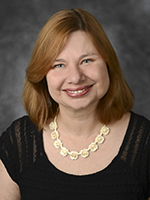
Gaining these new perspectives on what it means to teach and engage is precisely the value of these experiences, says Associate Dean of Student Services and Assessment Anne Walker. Walker and Bladow visit Introduction to Education classes at UND to get students thinking about the opportunity to travel the world while making progress on their degrees and professional development.
“I’m passionate about international education – I’ve taught around the world,” Walker said. “I started this position four years ago, and one of the first things I did was start to advertise Global Student Teaching more.”
Working and living in diverse cultures shows future employers an initiative to be adventurous and an ability to work with different people. It shows flexibility, adaptability and an openness to new ideas, Walker says.
In front of classrooms, Bladow plays a counter to Walker’s experience.
“Anne goes in and shares about her experiences traveling and teaching abroad, then I come in, saying I wish I would have,” Bladow said. “Looking back now, I regret not taking that chance. I think that’s inspiring for them to hear.”

